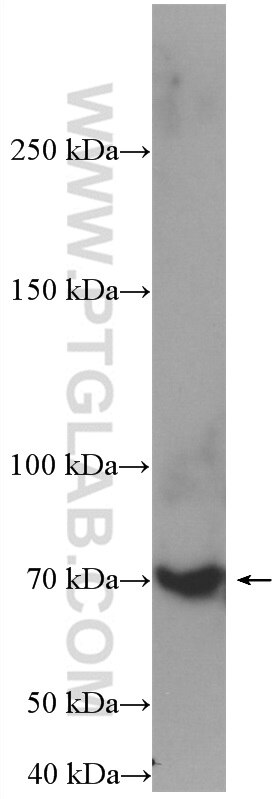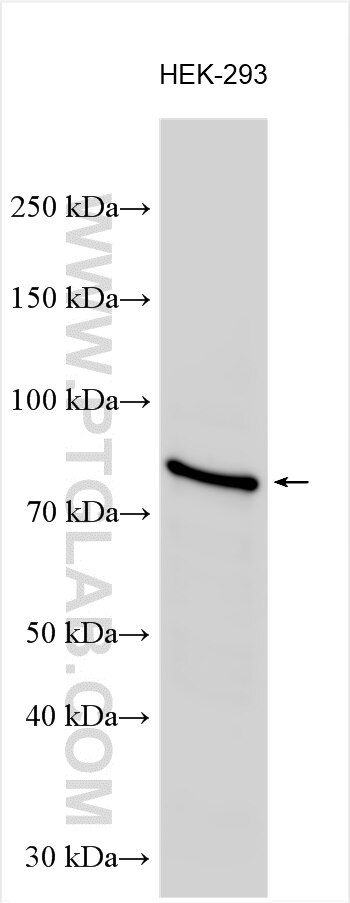Tested Applications
| Positive WB detected in | HEK-293 cells, mouse spleen tissue |
| Positive IP detected in | mouse kidney tissue |
Recommended dilution
| Application | Dilution |
|---|---|
| Western Blot (WB) | WB : 1:500-1:1000 |
| Immunoprecipitation (IP) | IP : 0.5-4.0 ug for 1.0-3.0 mg of total protein lysate |
| It is recommended that this reagent should be titrated in each testing system to obtain optimal results. | |
| Sample-dependent, Check data in validation data gallery. | |
Published Applications
| WB | See 1 publications below |
Product Information
26611-1-AP targets SLC26A1 in WB, IP, ELISA applications and shows reactivity with human, mouse samples.
| Tested Reactivity | human, mouse |
| Cited Reactivity | human |
| Host / Isotype | Rabbit / IgG |
| Class | Polyclonal |
| Type | Antibody |
| Immunogen | SLC26A1 fusion protein Ag24306 Predict reactive species |
| Full Name | solute carrier family 26 (sulfate transporter), member 1 |
| Calculated Molecular Weight | 75 kDa |
| Observed Molecular Weight | 70 kDa~85 kDa |
| GenBank Accession Number | BC015517 |
| Gene Symbol | SLC26A1 |
| Gene ID (NCBI) | 10861 |
| RRID | AB_2880574 |
| Conjugate | Unconjugated |
| Form | Liquid |
| Purification Method | Antigen affinity purification |
| UNIPROT ID | Q9H2B4 |
| Storage Buffer | PBS with 0.02% sodium azide and 50% glycerol , pH 7.3 |
| Storage Conditions | Store at -20°C. Stable for one year after shipment. Aliquoting is unnecessary for -20oC storage. 20ul sizes contain 0.1% BSA. |
Protocols
| Product Specific Protocols | |
|---|---|
| WB protocol for SLC26A1 antibody 26611-1-AP | Download protocol |
| IP protocol for SLC26A1 antibody 26611-1-AP | Download protocol |
| Standard Protocols | |
|---|---|
| Click here to view our Standard Protocols |
Publications
| Species | Application | Title |
|---|---|---|
Chem Res Toxicol The Potential Contribution of Hexavalent Chromium to the Carcinogenicity of Chrysotile Asbestos |







